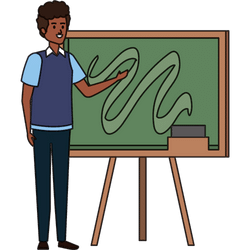Writing in the second person can be a powerful tool for engaging readers, but it can also be challenging for many writers. This form of writing addresses the reader directly, using the pronoun "you," creating a more personal and intimate tone. In this article, we will explore the basics of second person writing and provide tips on how to effectively use it in your own writing. Whether you are a seasoned writer looking to expand your skills or a beginner looking to understand this unique style, this guide will provide you with everything you need to know about writing in the second person.
Writing in the second person can be a powerful and engaging way to connect with your audience. It is a unique perspective that invites the reader to become a part of the story, making it an effective tool in various forms of writing such as fiction, marketing, and instructional materials. However, writing in the second person is not as straightforward as first or third person narration. In this article, we will explore the concept of second person writing, its uses, and how to effectively use it in your own writing.
What is Second Person Writing?
Second person writing is a point of view in which the writer directly addresses the reader as "you". It creates a sense of immediacy and personal connection with the reader by putting them in the shoes of the protagonist or main character. This differs from first person narration, where the writer uses "I" to refer to themselves, and third person narration, where the writer uses "he" or "she" to refer to the characters.
One way to understand second person writing is to imagine a conversation between the writer and the reader. The writer is guiding the reader through the story or instructions, directly involving them in the narrative. For example, instead of saying "The protagonist walked down the street", the writer would say "You walked down the street". This creates a sense of immediacy and immersion for the reader.
Understanding 2nd Person Writing
Second person writing is often used in literature and marketing to engage the reader and create a personal connection. It is also commonly used in instructional writing, as it can make the steps or instructions feel more relevant and relatable. Some examples of second person writing include choose-your-own-adventure books, self-help books, and interactive fiction.
It is important to note that writing in the second person does not necessarily mean that the reader is the protagonist or main character. The writer is simply addressing the reader as if they were the main character, making them feel like an integral part of the story. This can be a powerful tool for creating empathy and connection with the reader.
What You Need to Know About Second Person Writing
When writing in the second person, there are a few things to keep in mind to ensure that your writing is effective and engaging.
Avoid Overusing "You"
While addressing the reader as "you" is the key element of second person writing, overusing it can become repetitive and distract the reader from the story. Vary your sentence structures and use different ways to refer to the reader, such as "yourself", "one", or "the protagonist". This will help to keep your writing fresh and engaging.
Engage the Reader’s Senses
One way to make second person writing feel more immersive is to engage all of the reader’s senses. Use vivid descriptions and sensory details to help the reader experience the story alongside the protagonist. This will make the reader feel more connected and invested in the narrative.
Be Mindful of the Tone
The tone of your writing is crucial in second person narration. It should be conversational and engaging, but also appropriate for the genre or purpose of your writing. For example, if you are writing a horror story, the tone should be ominous and foreboding. If you are writing a how-to guide, the tone should be informative and instructional.
Maintain Consistency
Consistency is key in any type of writing, and this applies to second person writing as well. Make sure to maintain a consistent point of view throughout the entire piece. Switching back and forth between second and third person can confuse the reader and disrupt the flow of the story.
In Conclusion
Writing in the second person can be a powerful tool for connecting with your audience and creating a personal and immersive experience. It requires careful attention to tone, consistency, and engaging the reader’s senses. When used effectively, second person writing can add depth and impact to your writing, making it a valuable technique to have in your writing arsenal.
Are you interested in learning more about the world of esports and gaming? Check out our article on what is 2nd person writing to discover the exciting careers available in this rapidly growing industry. Whether you’re a fan or looking to break into the industry, this guide has everything you need to know about pursuing a career in esports.
In conclusion, writing in the second person can be a powerful and effective tool for engaging readers and creating a unique narrative experience. By using "you" as the protagonist, the reader is drawn into the story and becomes an active participant. It is important to remember to use this perspective sparingly and with purpose, as it may not be suitable for all types of writing. To successfully write in the second person, be sure to maintain consistency, create a connection with the reader, and stay true to the character’s voice. With a solid understanding of the concept and some practice, anyone can master the art of writing in the second person. So go ahead and experiment with this perspective in your writing, and see how it can enhance your storytelling.
